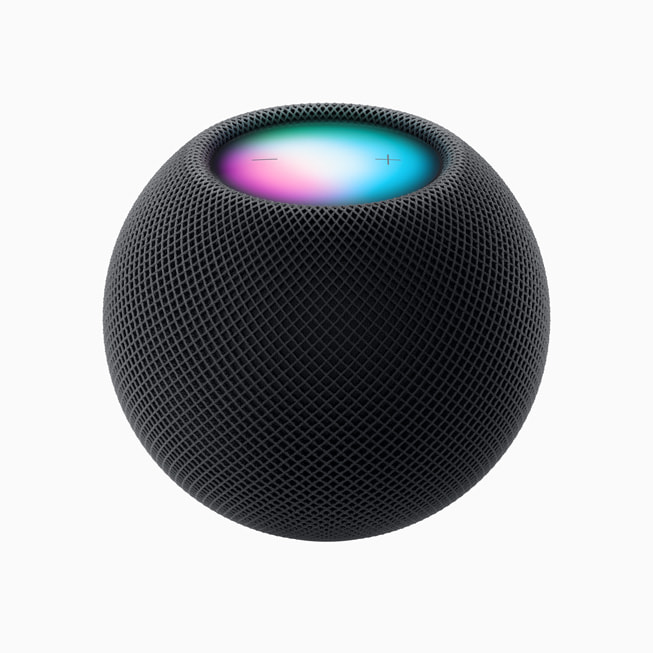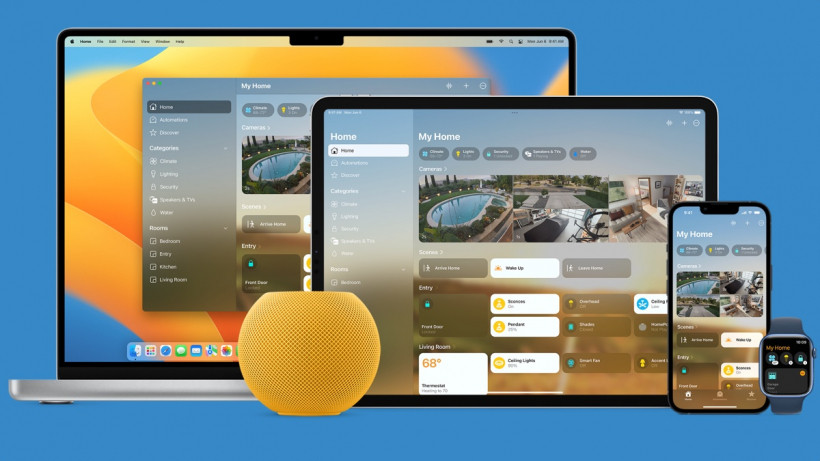The Future of Apple’s Ambient Computing Hub
Since its debut, the HomePod mini has carved out a significant niche in the smart speaker market, offering impressive audio quality in a compact design at an accessible price point. It has become a cornerstone of the Apple ecosystem, serving not just as a music player but as a central hub for HomeKit, a conduit for Siri, and an intercom for the modern family. However, the technology landscape moves at a relentless pace. The original HomePod mini, powered by the S5 chip, is now several years old, and whispers of a second-generation model are growing louder. This anticipated refresh is more than just an iterative update; it represents a pivotal moment for Apple’s ambient computing strategy. A new HomePod mini could bring significant advancements in processing power, connectivity, and sensor technology, fundamentally enhancing its role within our homes and its integration with the ever-expanding universe of Apple devices. This article provides a comprehensive technical analysis of what we can expect from a potential HomePod mini 2, exploring the underlying technologies, the implications for the Apple ecosystem, and the practical benefits for users.
Section 1: The Case for a Refresh: Analyzing the Current HomePod Mini
To understand the significance of a potential HomePod mini 2, we must first appreciate the foundation laid by its predecessor. The original model was a masterclass in computational audio, leveraging its S5 chip (derived from the Apple Watch Series 5) to analyze music in real-time and optimize its sound profile. This allowed a speaker of its diminutive size to produce a rich, 360-degree soundstage that defied expectations. Beyond audio, its inclusion of the U1 Ultra Wideband chip for precise Handoff features and its early adoption of the Thread networking protocol positioned it as a forward-thinking smart home hub. This focus on future-proofing is a key part of recent HomePod news and sets the stage for what’s next.
Why an Upgrade is Imminent
Despite its successes, the original HomePod mini is beginning to show its age in a few key areas. The S5 chip, while capable, is several generations behind the silicon found in the latest Apple Watch and iPhone models. As Siri’s capabilities evolve with ongoing iOS updates news and on-device processing becomes more demanding, a more powerful processor is necessary to ensure instantaneous responses and support more complex commands. This is a recurring theme in Siri news, where latency is the primary barrier to a truly seamless user experience.
Furthermore, connectivity standards have advanced. The original HomePod mini supports Wi-Fi 4 (802.11n), which is adequate but can become a bottleneck in homes saturated with Wi-Fi devices. The transition to newer standards like Wi-Fi 6E would offer a dramatic improvement in speed, latency, and reliability, especially for a device that acts as the central nervous system for countless smart accessories. This evolution is crucial for the entire Apple ecosystem news, as the performance of the hub directly impacts the performance of every connected device, from an iPhone sending a command to an Apple TV streaming content.
Historical Context: From Personal Audio to Home Audio
Apple’s journey in audio didn’t begin with the HomePod. It’s a legacy built on the foundation of the iPod. Much like the original iPod Mini news signaled a shift towards portability and accessibility, the HomePod mini made Apple’s home audio vision accessible to the masses. While we’re unlikely to see an iPod revival news cycle for devices like the iPod Classic or iPod Shuffle, the design philosophy of simple, high-quality audio lives on. The HomePod mini is, in many ways, the spiritual successor to the iPod Hi-Fi—a modern re-imagining of Apple’s ambition to own the sound experience in the home, a far cry from the days of iPod Touch news which focused on a pocket-sized computer.
Section 2: Under the Hood: A Deep Dive into Potential Technical Upgrades

A second-generation HomePod mini would likely focus on three core areas of technical improvement: processing, connectivity, and sensory capabilities. These upgrades would work in concert to deliver a faster, more reliable, and more contextually aware experience.
A New Brain: The S-Series Chip Upgrade
The most significant upgrade is expected to be the processor. The logical step would be for Apple to incorporate a newer S-series chip, such as the S8 or S9 found in the latest Apple Watch models. This leap in processing power would have several profound effects:
- Enhanced Computational Audio: A faster chip can run more sophisticated algorithms to further refine the audio output, potentially offering better bass response, clearer highs, and more effective room sensing, even in a single-unit configuration.
- On-Device Siri Performance: With a more powerful Neural Engine, more Siri requests could be processed locally without needing to query Apple’s servers. This directly addresses Apple privacy news and iOS security news, as it keeps personal data within the home. It also drastically reduces latency, making interactions with Siri feel instantaneous.
- Future-Proofing for AI: As Apple continues to invest in large language models and more advanced AI features, a powerful edge device like the HomePod mini 2 will be essential for running these models efficiently and privately.
Next-Generation Connectivity: Wi-Fi 6E and Beyond
Upgrading the HomePod mini’s networking capabilities is critical for its role as a smart home hub. The move to Wi-Fi 6E would be a game-changer.
- The 6 GHz Advantage: Wi-Fi 6E introduces a new 6 GHz band, which is far less congested than the 2.4 GHz and 5 GHz bands used by most current devices. For a HomePod mini acting as a hub, this means a dedicated, high-speed lane for communication with the router, ensuring that commands to smart lights, locks, and cameras are executed without delay.
- Lower Latency and Higher Throughput: This is not just about raw speed. Lower latency is crucial for real-time interactions, from asking Siri a question to streaming lossless audio. This upgrade would also benefit other devices in the ecosystem, such as the latest products in AirPods news and Apple TV news, which also support these newer standards.
- Improved Bluetooth and Thread: We can also expect an upgrade to Bluetooth 5.3 for more robust accessory connections and potentially a next-generation Thread radio for even better Matter performance.
Expanded Sensory Awareness
The current HomePod mini already includes temperature and humidity sensors, which were activated via a software update. The next generation could expand on this. There is speculation that Apple could integrate air quality sensors (for VOCs, PM2.5), which would align with the company’s focus on health and wellness, a constant topic in Apple health news. This would allow the HomePod mini to not only control the home but also monitor its environment, providing users with actionable health insights and triggering automations, such as turning on an air purifier when air quality drops.
Section 3: Redefining the Smart Home: Ecosystem Integration and New Capabilities
A technically superior HomePod mini 2 wouldn’t just be a better speaker; it would be a more intelligent and integral part of the Apple ecosystem, unlocking new experiences and solidifying its role as the home’s digital heart.
The Lynchpin of a Smarter Home

With a faster chip and Wi-Fi 6E, the HomePod mini 2 would become an even more powerful Home Hub for HomeKit and the Matter standard. Real-world scenarios would see tangible improvements. For example, a “Good Morning” scene that turns on lights, raises the blinds, and starts a coffee maker would execute instantly and reliably, every single time. Live video feeds from security cameras would load faster on your iPhone or Apple TV, and automations based on presence detection (using your iPhone or Apple Watch location) would be more responsive. This reliability is key to building user trust in the smart home.
Synergy with Spatial Computing and Apple Vision Pro
The HomePod mini 2 is poised to play a fascinating role in Apple’s spatial computing future. As a device with a fixed position in a room, it can act as a spatial anchor for the Apple Vision Pro. The U1 chip (or a potential U2 successor) could allow the Vision Pro to understand its precise location relative to the HomePod mini, enabling more immersive and stable AR experiences. This ties directly into the latest Apple AR news and Apple Vision Pro news.
Imagine developers creating AR applications where audio cues emanate precisely from the HomePod mini’s location, or using it as a central point for multiplayer AR games within a room. While niche topics like Vision Pro wand news or new Vision Pro accessories news are still emerging, a powerful ambient hub like the HomePod mini 2 would be the perfect companion device to ground these future digital interactions in physical space. It could even be used to control elements of an iPad vision board in an AR environment, bridging the gap between 2D planning and 3D visualization.
Deeper Integration Across Apple Devices
The enhanced processing and connectivity will strengthen the bonds between the HomePod mini and other Apple products. Handoff for music and calls from an iPhone would be even more seamless. When watching content on an Apple TV, the HomePod mini 2 could offer a more robust wireless audio option, especially when used in a stereo pair. The experience would feel more cohesive, reinforcing the core value proposition of the Apple ecosystem. This seamlessness is a constant goal, reflected in everything from AirPods Pro news about intelligent switching to the latest Apple Pencil news about its intuitive pairing with iPad.

Section 4: Practical Considerations and Recommendations
With a new product on the horizon, current and prospective buyers face a common dilemma: buy now or wait? The decision depends heavily on individual needs and priorities.
For Potential Buyers: Should You Wait?
- Buy Now If: You need a smart speaker immediately, are new to the Apple smart home ecosystem, or are looking for a secondary speaker for a less critical room (e.g., a bedroom or office). The current HomePod mini is still an excellent device that performs its core functions admirably.
- Wait If: You are a power user with a large number of smart home devices, highly value the fastest possible Siri response times, or live in a home with significant Wi-Fi congestion. If you are invested in the future of spatial computing with Apple Vision Pro or are planning a major smart home overhaul, the benefits of Wi-Fi 6E and a faster processor in the HomePod mini 2 will be substantial.
Tips for Maximizing Your HomePod Mini Experience
- Create a Stereo Pair: If you have two HomePod minis in the same room, you can create a stereo pair for a much wider and more immersive soundstage. This is especially effective when using them as the default audio output for an Apple TV 4K.
- Utilize it as a Home Hub: Ensure your HomePod mini is set as a Home Hub in the Home app. This is what enables remote access to your HomeKit accessories and allows automations to run reliably.
- Leverage the Intercom Feature: Intercom is a powerful tool for families, allowing you to send voice messages from one HomePod to another, or from your iPhone, iPad, or Apple Watch to all HomePods in the house.
- Explore Thread Accessories: When purchasing new smart home devices, look for those that support Thread. Pairing them with a HomePod mini creates a self-healing mesh network that is faster and more reliable than Wi-Fi or Bluetooth for these low-power devices. This is a key piece of advice for anyone following Apple accessories news.
Conclusion: The Intelligent Hub of Tomorrow’s Home
The rumored HomePod mini 2 is far more than a simple speaker upgrade. It represents the next logical step in Apple’s long-term vision for an intelligent, seamlessly integrated home. The expected advancements—a faster S-series chip, next-generation Wi-Fi 6E connectivity, and potentially new environmental sensors—are not just incremental improvements. They are foundational technologies that will unlock a new level of performance, privacy, and capability. This new device will likely serve as a faster and more reliable brain for the smart home, a more responsive and private conduit for Siri, and a crucial spatial anchor for the burgeoning world of AR and the Apple Vision Pro. For users deeply invested in the Apple ecosystem, the HomePod mini 2 promises to be the quiet, intelligent hub that makes all their devices work better, together, transforming the home into a truly smart environment.











